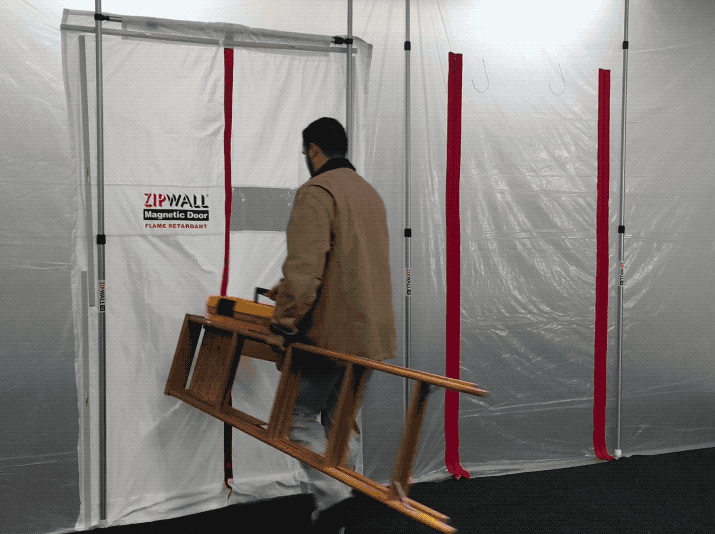
APC: Dust Containment for Painters – Don’t Overlook Project Dust Oct 2016
Excerpts from APC dust containment article by Jeff Whittemore
By discussing a dust containment plan with a client early in the process, you are presenting yourself as a painter who reflects the best qualities of the trade: someone who cares about your customer’s well-being and shares their concerns.You are showing that neatness and precision are natural aspects of the way you do business.
On a residential job, customers want to know how they can continue to comfortably live at the same time you’re prepping and painting. For commercial jobs, businesses want to know how they can stay open and make payroll. In these situations, professional dust barriers are much more than just a way to keep dust contained. They keep life moving uninterrupted for your customers.
A dust barrier system distinguishes itself from ad-hoc, homemade solutions by presenting a professional image to customers and being easy to rapidly set up and take down. Just like a good painter, a well-designed dust barrier system is both neat and fast. Spring-loaded poles are constructed with heavy-duty aluminum and telescope, so that barriers can be created and dismantled in minutes instead of hours, with no ladders, tape, or damage.
Customer quotes by Charles Esker of Sconset Painting in Nantucket, Mass.
“With ZipWall, we can section off a room so that carpenters can work on one side and we can work on the other,” says Charles. “This way, we can protect our finishes from carpentry dust. If we are working in our own room, we’ll put a dust barrier zipper door in the doorway to keep our space clean and dust-free.”
“We used to take blue tape across the ceiling walls floor and use plastic with white masking tape,” says Charles. “The dust barrier system we use saves us a lot of man hours with cleanup. We can go into fully furnished homes and partition them off without having to drape plastic over the house to protect furniture and paintings. We aren’t wrestling with plastic and tape.”
“Many kitchens today have living areas. If we are painting cabinets, we will create a barrier across that half of the room and our customers can continue to use the other half while we are working.”
“We’re really concerned about customers,” Charles says. We try to treat their house like it is ours. A dust barrier is the first thing we do when we do any job.”
Published in the October 2016 issue of American Paintering Contractor Magazine.






